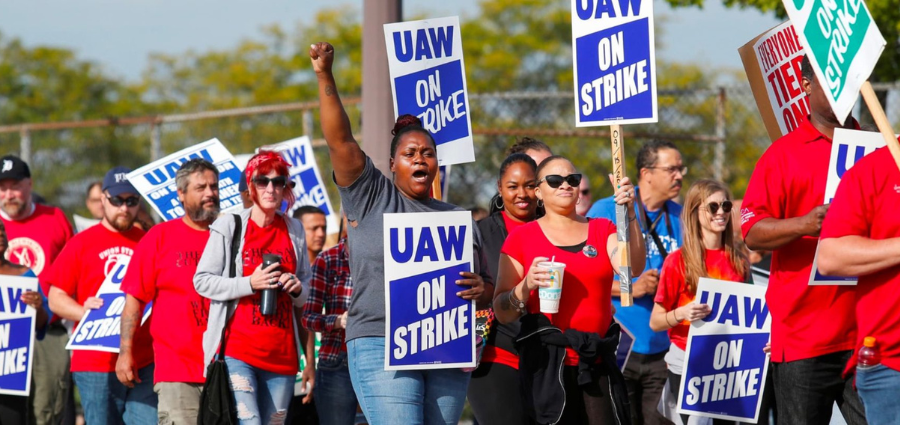In 2023, there were more major strikes by U.S. labor unions than in any other year since 2000, according to the U.S. Bureau of Labor Statistics.
Thirty-three major work stoppages began in 2023, the most since 2000 when there were 39. A “major” work stoppage involves 1,000 or more workers and lasts at least one shift during the work week, Monday through Friday excluding federal holidays, according to a Feb. 21 economic news release.
The 458,900 workers involved in those major work stoppages was driven by those in service-providing industries, including education and health services sector, but those in the manufacturing sector within goods-producing industries accounted for 61,200 workers, or 13.3% of idled workers over the year.
In 2023:
- Service-providing industries accounted for 397,700 workers, or 86.7% of idled workers over the year. Within
service-providing industries, the education and health services sector accounted for the idling of
188,900 workers, the information sector for 171,500 workers, and the other sectors for 37,300 workers. - Three local government and five state government work stoppages began, idling 91,100 workers.
- In private industry, 367,800 workers were idled beginning in the year.
In the 20 years between 2004 and 2023, there has been an average of nearly 17 strikes.
The lowest annual total of major work stoppages was five in 2009 and the highest was 470 in 1952.
(Lead photo via UAW on X)
Related Posts
-
The distribution and supply chain sector saw healthy month-to-month growth in project counts, with Texas…
-
Research from Colliers found that lease rates reached $9.72 per square foot last year despite…
-
The 3Q23 Baird-MDM Survey revealed new quantitative data on industry-wide frontline hiring/retention, and plenty of…





